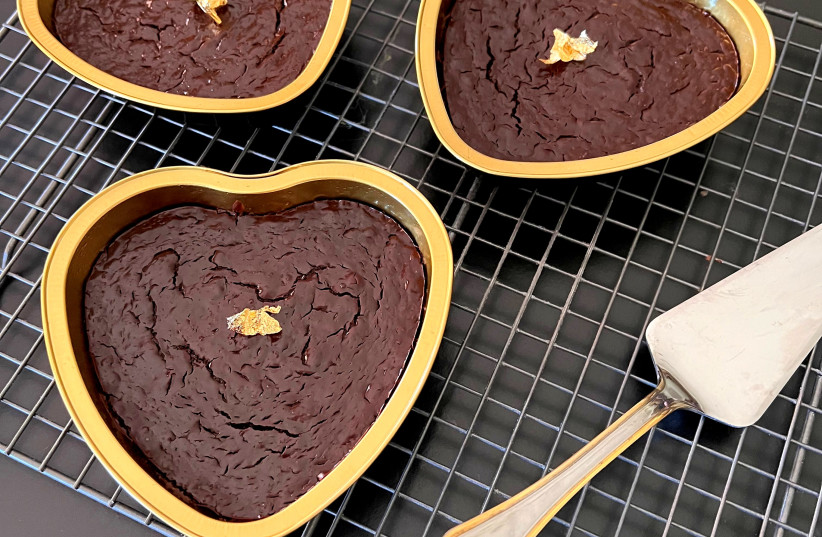“There were no greater holidays for Israel than Tu Be’av and Yom Kippur, for on them the girls of Jerusalem used to go out in borrowed white dresses…and dance in the vineyards. What would they say? ‘Young man, lift up your eyes and see what you choose for yourself…’” (Babylonian Talmud, Ta’anit 26b).
This is said to be the first mention of Tu Be’av, appearing in the Mishna – and written by Rabbi Simeon ben Gamliel, who lived 70 BCE-10 CE. He was head of the Sanhedrin and a direct descendant of King David.
Tu Be’av, the 15th of the Hebrew month of Av, was a festival in ancient times dedicated to young Jewish men and women finding their mates, celebrated as a holiday of love. This year, it begins at sunset on August 1.
What is the Jewish holiday of love, Tu Be'av?
According to the Talmud, during the time of the First Temple, Yom Kippur was the day on which one could hunt for a mate. The eligible single girls of Jerusalem wore borrowed white dresses to avoid embarrassment for those who possessed none and to hide their social status. Then they would go out and dance in the vineyards so they would be chosen as brides by eligible young men.
So too Tu Be’Av, which also marks the beginning of the grape harvest and is the final Jewish holiday of the year. Since it falls on the 15th of the Hebrew month, it is a full-moon night. Tisha Be’av, the 9th of Av, observed just six days earlier, recalls the history of Jewish tragedies. Tu Be’av represents the transformation of darkness into light, sorrow into joy.

Shilo was where the Holy Sanctuary – the precursor to the Holy Temple – stood for about 400 years during the era of the Judges. In the Book of Samuel, Shilo is mentioned as a religious center where Elkana and his family go to give sacrifices to God. During that pilgrimage, Elkana’s wife, Hannah, asks God to give her a son – and she eventually gives birth to Samuel.
Shilo is believed by researchers to have fallen into ruin after the Israelites’ unsuccessful war with the Philistines, in which the enemy captured the Holy Ark. The Ark was soon returned to Israel but was never brought back to Shilo. Instead, it was taken to Kiryat Ye’arim until King David had it delivered to Jerusalem.
The modern community of Shilo extends up the hills overlooking Tel Shilo, where over 3,000 years ago the Children of Israel gathered to erect the Tabernacle and to divide, by lots, the Land of Israel into tribal portions.
One of the most special features of historical Shilo was the emphasis placed on the importance of women during biblical times. Women even worked around the Tabernacle, helping to run the holy site. Today, visitors to Tel Shilo can experience the tasks that women traditionally performed. This Tu Be’av at Shilo there will be an evening event for couples with food stalls and a show. In previous years, in the same vineyards at Shilo, they held a program called Meholelot Bakramim (“dancing in the vineyards”), a Jewish Dance and Music Festival for Women. The idea was that women have the ability to connect with one another as they did on Tu Be’av 3,000 years ago. The message was that love is more than just between a woman and her husband; it’s much bigger than that. The real message of the holiday is love among people – and among the various groups of people in Israel.
After the destruction of the Temple and during the exile that soon followed, Tu Be’av fell into oblivion, resurrected only with the establishment of the State of Israel, where it still enjoys much popularity. In the Diaspora, this holiday has little relevance – except perhaps at Jewish summer camps.
In modern-day Israel on Tu Be’av, people send red roses to the one they love, romantic songs are played on the radio, and the holiday is celebrated with parties in the evenings. More weddings than usual are registered on this day in rabbinate offices, and many hold their marriage ceremonies on this day. Over the years, hotels and restaurants in Israel increasingly offer romantic meals on this date, with some featuring specials with red decorations and hearts. This year at Shilo, there will be an evening event for couples with food stalls and a show. For more information, email visit@telshilorg.il. ■
Sybil Kaplan is a Jerusalem-based journalist, lecturer, guide, book reviewer, food writer, and author of and/or contributor to nine cookbooks.
